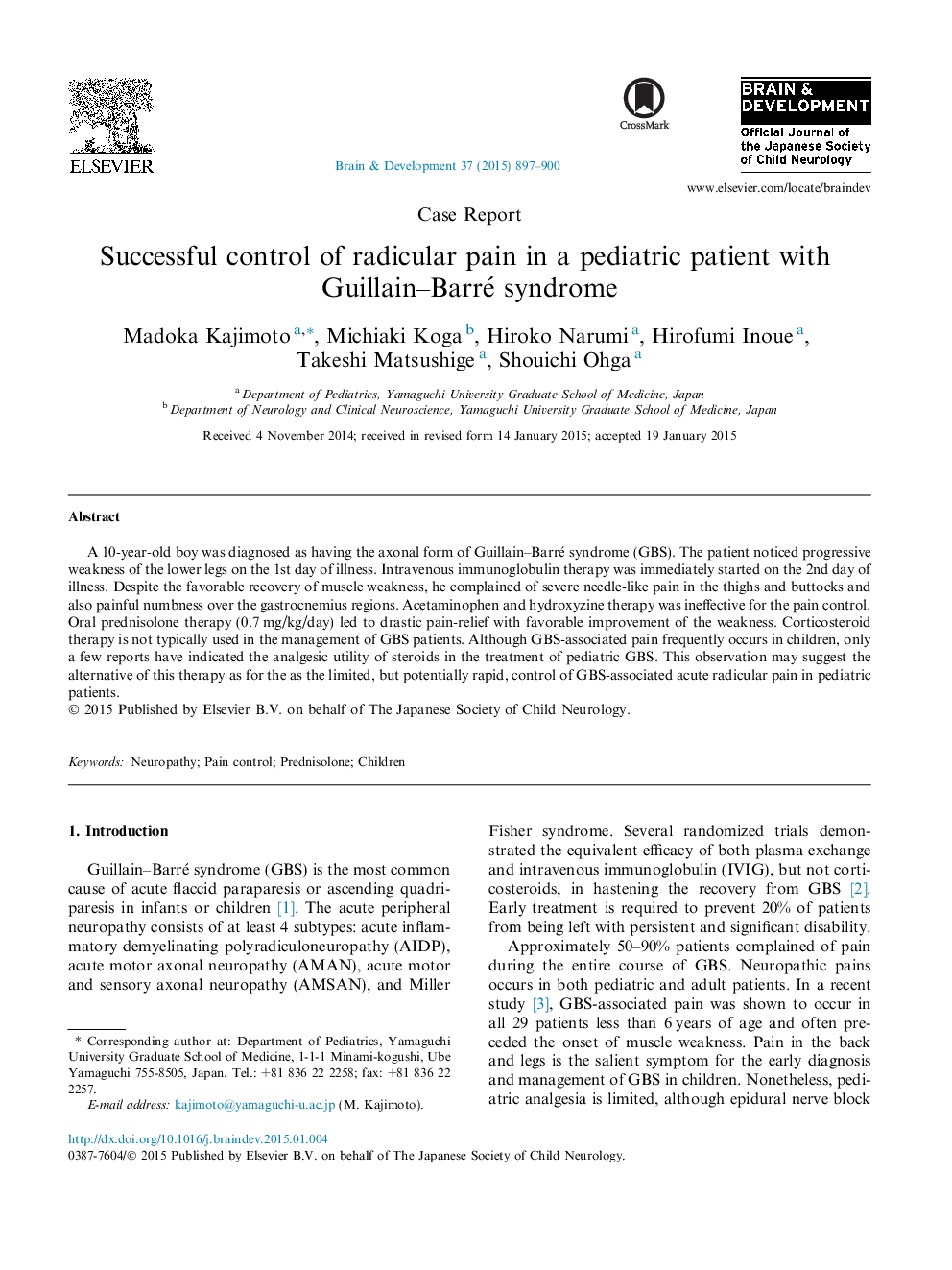| Article ID | Journal | Published Year | Pages | File Type |
|---|---|---|---|---|
| 3036584 | Brain and Development | 2015 | 4 Pages |
A 10-year-old boy was diagnosed as having the axonal form of Guillain–Barré syndrome (GBS). The patient noticed progressive weakness of the lower legs on the 1st day of illness. Intravenous immunoglobulin therapy was immediately started on the 2nd day of illness. Despite the favorable recovery of muscle weakness, he complained of severe needle-like pain in the thighs and buttocks and also painful numbness over the gastrocnemius regions. Acetaminophen and hydroxyzine therapy was ineffective for the pain control. Oral prednisolone therapy (0.7 mg/kg/day) led to drastic pain-relief with favorable improvement of the weakness. Corticosteroid therapy is not typically used in the management of GBS patients. Although GBS-associated pain frequently occurs in children, only a few reports have indicated the analgesic utility of steroids in the treatment of pediatric GBS. This observation may suggest the alternative of this therapy as for the as the limited, but potentially rapid, control of GBS-associated acute radicular pain in pediatric patients.
